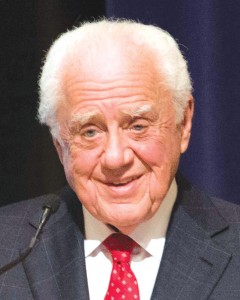Advances in LED technology and business: Intelligent lighting cuts energy costs up to 90% - by Diamond
The new generation of LED lighting products takes advantage of recent advances in LED chips and control system technology, making possible even greater savings in energy costs. Products such as Xeleum Lighting’s latest stairwell, garage, office, and warehouse luminaires use the latest high efficiency LED chips together with networked wireless and sensor technology to reduce energy usage by up to 90%, when compared to conventional lighting that does not employ these new features.
These advanced control systems are designed to operate automatically, essentially out of sight and with no participation needed from users, so concerns regarding instruction manuals and training are virtually eliminated.
Without user intervention, these systems accurately manages light levels, directs illumination only to locations where and when it’s desired and then, when they sense that there is no further need for full illumination, they switch to an energy saving preset lower level, or to fully off.
Even with these dramatic energy cost savings, the initial expense for the lighting and the installation often delayed decisions by owners and managers of commercial operations to proceed with conversion of their facilities to LEDs. Recently, however, a variety of new financing plans, some with utility participation and some available through LED lighting companies such as Xeleum, have made it possible to arrange for financing of up to 20 years, where all costs are paid out of the energy savings and these are no additional costs to end users.
Another recent advance involves time and cost for installation of LED fixtures. With the advent of this new generation of microprocessor-based wireless control systems and luminaires, much of the costs associated with the actual wiring has been eliminated and many of the new troffers have been specifically designed to be far easier to install than were the earlier LED fixtures.
When it comes to high power wide area lighting typically used in locations such as sports arenas, parks, parking areas and airports, tradition metal halide products are rapidly being replaced by LED fixtures such as the Xeleum Zeus Power Light.
The Xeleum Zeus Power Light is a wide area luminaire that can be mounted on a pole or at ground level. It’s designed in accordance with International Dark-Sky Association considerations and combines 6 independently rotatable light engines with 5 lens options to make possible the virtual painting of a target surface with the desired illumination, all while avoiding unwanted glare or light spillover.
Constructed of clean room applied powder coated aluminum housing, marine grade stainless steel brackets and UV resistant optics, this rugged light fixture is designed for long life and maintenance-free performance over a wide range of environmental and operational conditions, whether outdoors or indoors.
Smart Cities Smart City is a term gaining wider usage in the world of technology and loosely refers to the types of green projects and other such initiatives being undertaken by cities and large urban centers worldwide. The goal of Smart Cities is to enhance the quality of life of its inhabitants in fields ranging from energy usage, healthcare and transportation to waste disposal, communications and infrastructure.
LED Street Lighting occupies a central role in Smart Cities planning because, in addition to providing high quality illumination of public areas and the resulting safer streets, it also makes possible a number of useful services that includes improved local wi-fi and Internet service, video surveillance and reporting, traffic control and reporting, intelligent digital signs along with sensors for air quality and weather. Additionally, and consistent with “The Internet of Things” concept, there are further significant applications that make use of the data provided by multiple sensors imbedded within the light fixtures.
Adding smart controls further increases energy cost saving to the 70%-80% range and wirelessly connectivity reduces maintenance costs even more while improving overall lighting quality because it ensures that that any non-performing lights are quickly repaired or replaced.
Estimates of the number of roadway light currently installed in the U.S. vary widely with some into the 100 million range. According to a Wall Street Journal article, the Department of Energy reports that there are 58 million street lights in the U.S.
Bob Diamond is the president and CEO of Xeleum, Mt. Kisco, N.Y.
Eight things every new NYC apartment board member should do in their first 100 days in office - by Yotam Cohen


The CRE content gap: Why owners and brokers need better digital narratives in 2026 - by Kimberly Zar Bloorian








.gif)

.gif)
.jpg)
.gif)